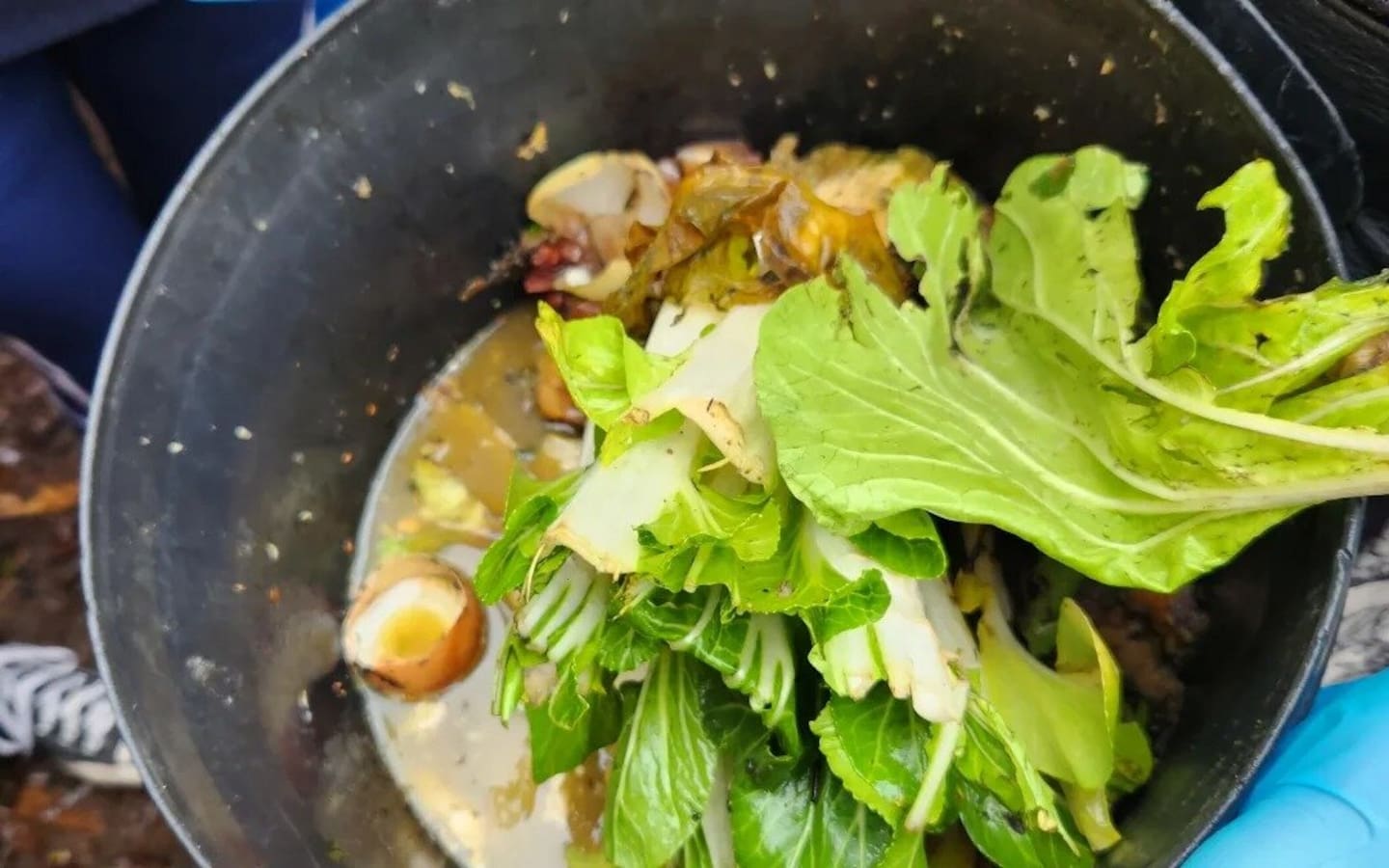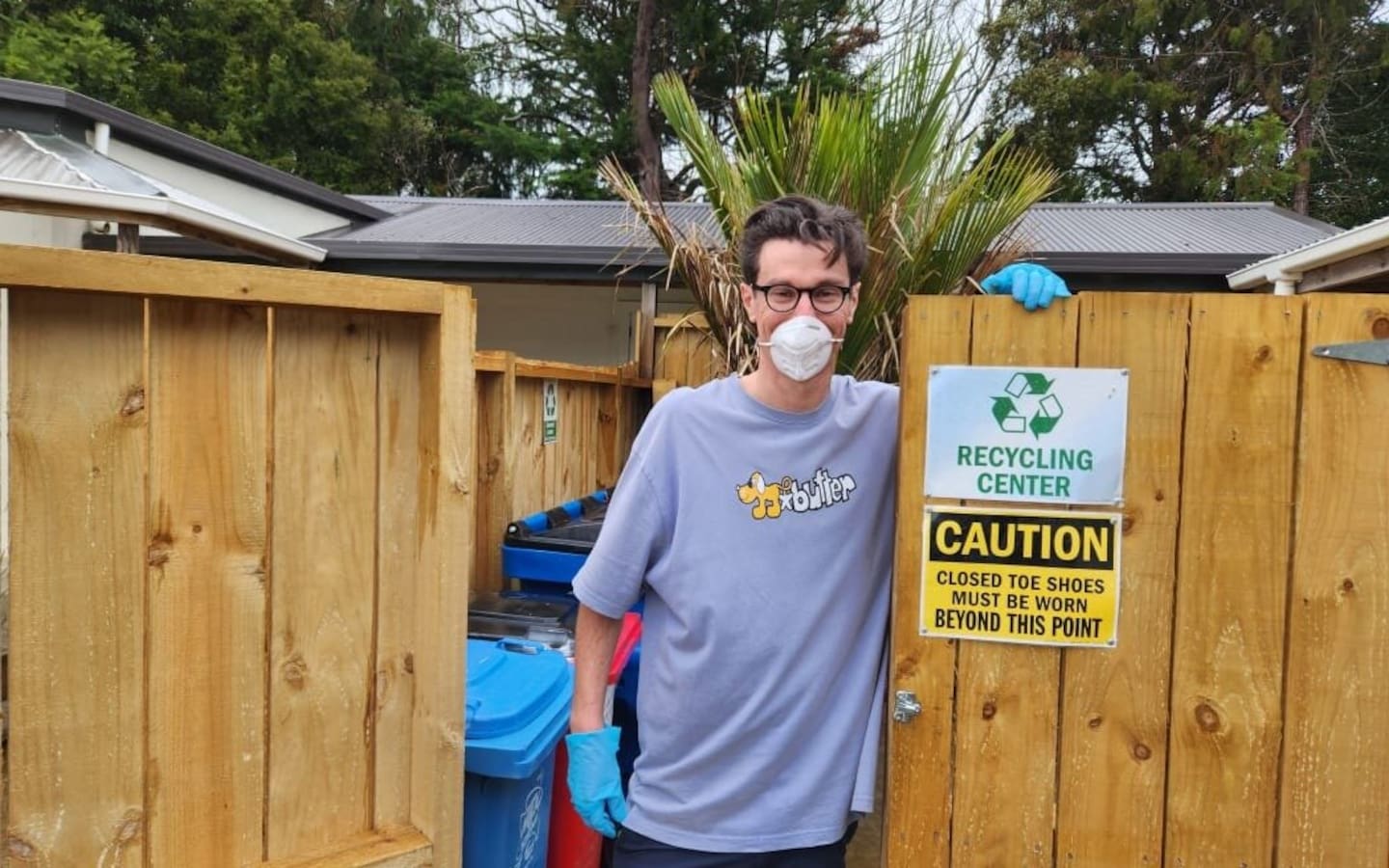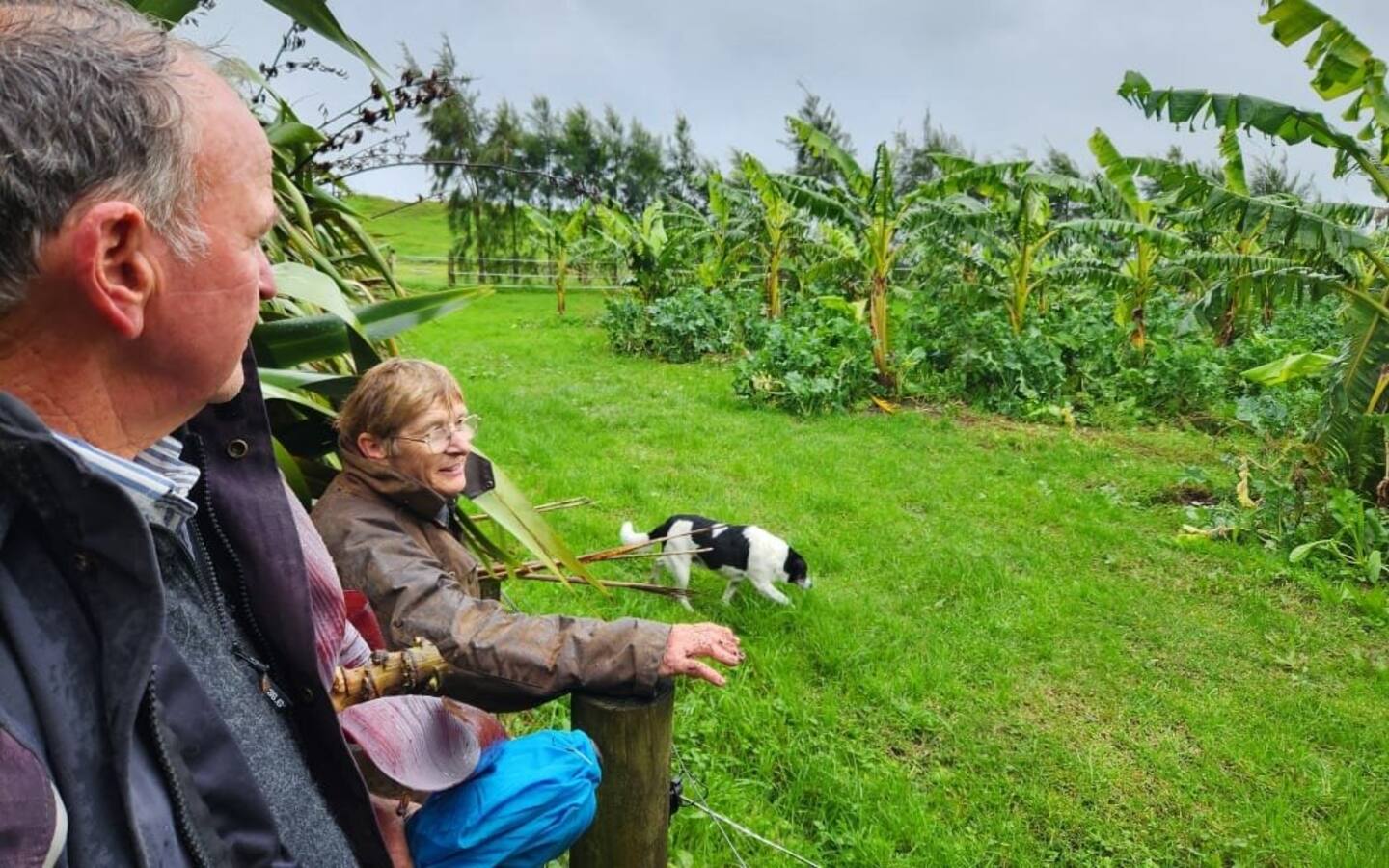
By Sally Round of RNZ
Itãs prep time in the kitchen at Evelyn Page Retirement Village in érewa, north of Auckland, and another load of food scraps has just gone into the bin.
Senior lead chef Dylan Hatt sprinkles some special sawdust over the top and closes the lid.
A few kilometres away in rural Wainui, a dedicated team of Year 8 students, in masks and gloves, is collecting caddies from the classrooms and emptying the lunchtime food scraps into larger bins, tamping down the gloop to a gleeful chorus of ãeewã and ãyuckã.
A few more kilometres inland, a banana farmer is at his specially built ãjettyã unloading dozens of wheelie bins of food scraps into a ãfast feederã which spreads the fermented waste into ditches lined with biochar.
He then covers it all with mulch and leaves it to nourish and build the soil.
This is the chain created by City to Farm, a project run by Hibiscus Coast Zero Waste (HCZW), to stop food waste going into landfill, to lower greenhouse gases and nourish local farmland.
ãThis is a way for everybody to participate in climate action with their food scraps, just sending them off to the farm,ã HCZW trustee Betsy Kettle told RNZãs Country Life.
City to Farm collects food scraps once a week from 25 collection points in the district, including kindergartens, cafes and restaurants, schools and the retirement village.
Partially grant-funded, it has diverted more than 350 tonnes of food scraps from landfill since it started in 2019.
The food scrap producers pay to have their scraps taken, which also helps fund the operation, Kettle said.

Betsy Kettle, one of the drivers of the City to Farm project, checks out one of the specially adapted food scrap bins at Ryman's Evelyn Page Retirement Village. Photo / RNZ, Sally Round
ãWe donãt call it waste. No, these are resources,ã she said, lifting the lids of bins in the basement of the retirement village.
They have woody mulch and biochar in the base to help with the pickling process known as bokashi.
The bins are strapped down to make them airtight, ready for the weekly pick-up truck, which then transports the bins to the banana farm for further composting and integrating with the soil.

The City to Farm project, run by Hibiscus Coast Zero Waste, collects food scraps from 25 centres - retirement villages, schools, kindies, restaurants and cafes - to be turned into compost for soil improvement on farms nearby. Photo / RNZ, Sally Round
One of the retirement villageãs residents spotted the project in the local paper, and it took on a life of its own, village manager Jill Clark said.
ãThereãs no extra work. Itãs just so routine.
ãNow thatãs just what we do, because weãve been doing it so long.ã
Itãs also become normal for the children at Wainui School.
ãWhen we started it, we didnãt really know what to think of it,ã Year 8 student Madison Freestone said.
ãWe kind of just like, did it, and we were sort of like, ãeewã.
ãBut now we do it all the time, and we do find it cool. We find it fun. We learn new things all the time.ã

The Year 8 student team in charge of food scrap recycling in the school vegetable garden. Arielle Oswald (left), Leah Andrell, Morgan Price, Madison Freestone Photo / RNZ, Sally Round
Madison and three other Year 8s form a dedicated team of food waste busters at the rural school.
The bokashi method doesnãt attract rodents, a particular problem with composting in a rural setting, principal Gillian Bray explained.
The fertiliser created from leftovers is feeding the school vegetable garden, as well as City to Farm.
Kettle said City to Farm provided schools with special food scrap caddies and a little stand that also took paper and hard recyclables.
She said they talked to the children about the link between food scraps and greenhouse gases when placed in a landfill, as well as the way food scraps, together with biochar, can build topsoil and create a carbon sink.

Wainui School's recycling hub where food scraps are turned into nutrient rich fertiliser Photo / RNZ, Sally Round
The Year 8 girls have taken to educating too, and theyãre very strict about what canãt go in the caddies.
ãAny liquids, such as yoghurt, you know, juices, that type of stuff, no whipped cream, no meat, because the meat can make maggots grow, and itãs gross.
ãYeah, and obviously no rubbish.
ãSo, if someone does something wrong, we remind them that they canãt put that stuff in the bin.
ãAnd we tell them what they can and canãt put in the bin, so that they know for next time.ã
Teacher Nick Wotton, who leads the project at the school, said the girls had taken the task on with gusto.
ãOur goal is for our students to be more sustainable and environmentally responsible, and I think this, starting with the girls, is a way to sort of embed that in our students and in our culture as a whole.ã
Scraps to soil

Phil and Jenny Grainger looking out over their growing banana farm, fuelled with food scraps Photo / RNZ, Sally Round
Down the road from Wainui School, Phil and Jenny Grainger are hosting lunch at a large table.
Big bunches of bananas decorate their off-grid home from which wafts a delicious aroma.
Jenny has made a banana curry from bananas grown out of the once-poor soil, which has been nourished by six years of food scraps.
ãWhen we first came here, there was hardly a worm on the place,ã Jenny said.
The land was also dry and hydrophobic, repelling water.
The couple, former dairy and kiwifruit farmers, took on the task of taking in the food scraps to see how soil could benefit and ãto sequester carbonã, Phil said.
They experimented with banana swales, digging ditches and building up banks for the plants with biochar and the fermented scraps, topped with mulch.
Rainwater and organic matter were then able to infiltrate the clay soil.
They also developed systems to make food scrap application more efficient and not so messy, and now apply the scraps once a month using a fast feeder and orchard tractor.
ãInitially, it was having a car trailer trying to unload these wheelie bins and tipping and mud and stuff, and it was disgusting and terrible,ã Phil said.
The Graingers have planted more and more banana plants as the food scraps initiative has grown, and theyãve had the soil tested and learnt more about growing the fruit.
Other challenges emerged on-farm, including rats and flies, but surprisingly, odours were minimal, likely due to the bokashi fermentation process, which prevented putrefaction, Kettle said.
ãAlthough the work was messy, the impact was undeniable.ã
The Graingers are now transitioning into producing bananas commercially.
Kettle said her husband did some sums and they reckoned half of Aucklandãs food scraps could be diverted from landfill on to 400 hectares of farmland.
Theyãd like more farmers and communities to be involved.
ãThe City to Farm system is meant to model a small-scale, decentralised, local-resources-for-local-use system that, hopefully, other community groups will trial in their areas.
ãAnd if we could do that, then we would beãÎ helping the whole planet, and the farmers would be heroes.
ãTheyãd be climate heroes.ã
- RNZ
Take your Radio, Podcasts and Music with you
Get the iHeart App
Get more of the radio, music and podcasts you love with the FREE iHeartRadio app. Scan the QR code to download now.
Download from the app stores
Stream unlimited music, thousands of radio stations and podcasts all in one app. iHeartRadio is easy to use and all FREE









